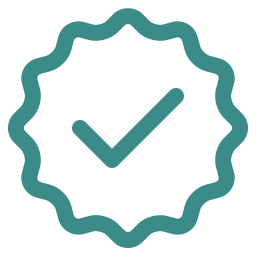Unlock the Power of Your Core: A Comprehensive Guide to Pilates Exercises that Strengthen and Stabilize Your Midsection
Are you looking for an efficient way to build core strength and stability? If so, Pilates exercises are the perfect solution.
This full-body workout focuses on using slow, controlled movements that engage your entire body - from your toes to your head!
Not only do these exercises target your abdominal muscles, but they also work out other areas of your body as well.
With regular practice, Pilates can help improve posture, coordination, balance, flexibility and overall physical health.
In this article, we will explore the benefits of Pilates exercises for building core strength and stability.
The human core is a complex network of muscles that support our spine and torso during daily activities such as walking or running.
It’s essential for us to keep our core strong in order to maintain good posture and reduce injury risk while exercising.
Unfortunately, many people don't know how to effectively train their core.
That's where Pilates comes in: with its special emphasis on Pilates breathing techniques and precise control over movement, it provides an effective way to strengthen your deep abdominal muscles (and more!).
Pilates utilizes a number of different exercises that involve stretching and strengthening key muscle groups around the trunk of the body in order to promote better core stability and mobility.
These exercises focus on targeting small muscle fibers which helps enhance muscular endurance while reducing fatigue. All without putting too much strain on joints or connective tissues.
Whether you're new to exercise or already have some experience under your belt, Pilates is suitable for everyone at any level – regardless of age or fitness ability!
Read further to learn about the various types of Pilates exercises available for improving core strength and stability.
Benefits Of Pilates Core Training
Pilates is a great way to strengthen and stabilize your core, especially with the use of a Pilates machine for sale.
It's been around since the early 1900s, so you know it can't be that bad!
Pilates for core stability helps build strength in both the abdominal muscles and back muscles, giving you overall better posture, balance, and coordination.
Core training with a Pilates chair for sale can also increase flexibility as well as reduces stress on your joints by improving muscle control.
With consistent practice of Pilates core exercises, you can greatly improve your body’s ability to support itself during physical activities such as running or weight lifting.
The benefits of Pilates core training do not stop there. Strengthening the core also supports breathing mechanics which ultimately optimizes performance levels.
When done regularly, these exercises help prevent injuries from occurring due to weak areas within the torso region.
By toning up those abs and stabilizing them through movement sequences, we are able to achieve greater mobility and ease of motion throughout our bodies - something that comes in handy when trying out new workouts or even just walking around all day!
Now that we've seen why working on our cores is important let's look at how to strengthen and stabilize them with Pilates exercises.
How To Strengthen And Stabilize The Core With Pilates Exercises
When it comes to strengthening and stabilizing the core, Pilates exercises are an excellent choice.
Core muscles are important for keeping your body balanced and aligned during physical activities.
Through regular practice of Pilates exercises, you can ensure that these vital muscles remain strong and stable.
Strengthening the Core:
-
Pilates for Core
This type of exercise focuses on using controlled movements to strengthen deep abdominal muscles, which support the spine and help maintain good posture.
Commonly used Pilates core exercises include crunches, planks, bridges and twists.
And to make your exercise more challenging, you can use a Merrithew SPX Max Reformer. This will help you develop core strength and stamina.
-
Core Pilates Exercises
These exercises target specific areas of the body in order to build strength and stability in a particular area or group of muscles.
Examples include leg lifts, side kicks and arm circles.
Stabilizing the Core:
-
Pilates Stability Exercises
These exercises help improve balance by engaging multiple muscle groups at once while also working to increase flexibility and range of motion.
Popular stability exercises include single-leg balance holds and walking lunges with lateral arm reaches on a V2 Max Reformer.
By consistently performing both strengthening and stabilization exercises through a combination of Pilates methods, you can effectively strengthen your core muscles while building stability in all areas of your body.
With increased strength comes improved coordination as well as better protection from injury due to poor postural alignment.
As such, investing time into practicing Pilates is an incredibly effective way to develop a strong core foundation for any activity level or lifestyle requirement.
Types of Pilates exercises vary greatly depending on individual goals.
However, most focus on improving mobility within joints as well as developing muscular endurance for sustained performance over time.
Additionally, some forms may involve equipment such as ankle weights or resistance bands for greater challenge or variation when needed.
Regardless of what techniques one chooses to use in their practice, incorporating Pilates into their routine can be highly beneficial for achieving optimal health and fitness levels related to core strength and stability development.
Types Of Pilates Exercises For Building A Strong Core
Pilates exercises are an excellent way to build core strength and stability.
They focus on engaging the deep abdominal muscles which make up the core, helping you become stronger from within.
These various Pilates ab exercises can be used as part of your regular workout routine or done separately for a more focused approach towards building a strong core.
The first type of exercise is the Plank.
This involves getting into a plank position with your feet together and arms straight while keeping your body in line from head to toe.
You should hold this position while actively squeezing your glutes and engaging your abdominals.
This will help strengthen all areas around the spine, providing increased support and balance throughout movements that involve twisting or bending forward.
Another popular Pilates ab exercise is the Bicycle Crunch.
To do this, simply lie flat on the floor with your hands behind your head before lifting both legs off the ground at once and bringing them towards your chest in alternating fashion like when riding a bicycle.
Make sure to keep your lower back pressed firmly against the ground during each movement so as not to strain it any further as this could lead to injury over time.
These two exercises provide great benefits for those looking for improved core strength and stability through Pilates training.
And by incorporating these moves regularly into a Merrithew reformer, you’ll experience lasting results that will improve how you move and perform in everyday life activities.
Moving onto another important aspect of improving core strength: abdominal exercise routines with Pilates!
Abdominal Exercise Routines With Pilates
The core is an essential part of the body for strength and stability during physical activity.
Pilates can be a great way to build up this area and improve overall fitness levels.
This section will discuss various abdominal exercise routines with Pilates, including different types of workouts that target the abs.
One popular Pilates core workout involves specific exercises designed to strengthen the abdominals, such as crunches, planks, side bends, and scissor kicks.
These exercises focus on building muscle in the midsection while also helping to increase balance and coordination.
Additionally, they help promote good posture by engaging muscles throughout the entire torso.
Another type of Pilates exercise for abs is known as stability work or “stabilization” sets.
In these sets, one holds certain positions for prolonged periods of time in order to engage multiple muscle groups at once.
Examples include standing balances like balancing on one leg or holding a plank position for several seconds.
These kinds of exercises are particularly effective at improving core strength and stability over time, making them ideal for those seeking longer-term results from their Pilates routine.
These two types of ab workouts combined together form a comprehensive approach to strengthening your core with Pilates exercises.
By incorporating both stabilizing movements as well as traditional ab moves into your routine you can maximize the efficacy of each individual session and achieve better long-term results with your training program.
With regular practice and dedication, it's possible to see noticeable improvements in your strength and stability through using these kinds of exercises regularly.
Tips For Improving Core Strength And Stability With Pilates Exercises
Improving core strength and stability with Pilates exercises can be done at home or in a gym setting.
A great way to start is by doing an at-home Pilates core workout that incorporates different types of exercises into one routine.
Utilizing bodyweight resistance, such as pushups, planks, and leg lifts, while also incorporating equipment such as an Elina Pilates Reformer with Tower is important for increasing the intensity of your workouts.
Additionally, focusing on specific Pilates movements like crunches, oblique twists, pelvic tilts and more will help target those hard-to-reach muscles and create a well-rounded core Pilates program.
When it comes to strengthening your abs, there are many different types of Pilates exercises for abs that you can do.
Some examples include the basic crunch which works your rectus abdominis (the six-pack muscle), reverse curls that work your lower abdominal area, side plank hip lifts targeting your obliques and even bridge poses which strengthen your entire torso from glutes up to the chest.
Incorporating these exercises into a regular routine can lead to increased strength in all areas of the abdomen region over time.
For best results when working out with Pilates movements, make sure to focus on proper form and go through each movement slowly while engaging deep core muscles throughout each rep.
This will ensure maximum benefit from every exercise so you can reap the rewards of improved posture plus stronger cores with greater flexibility too!
Impact Of Pilates On Long-Term Health And Wellness
Pilates is a revolutionary form of exercise that has truly changed the game when it comes to building core strength and stability.
In just minutes a day, Pilates can give you incredible results in terms of long-term health and wellness.
It's no wonder so many people have become devoted to doing Pilates exercises for abs and other core muscles!
The impact that regular Pilates workouts can have on your overall well-being is nothing short of miraculous.
Not only will you see powerful improvements in muscle tone and posture, but research suggests that consistent practice of Pilates for core strength may even reduce risk factors associated with chronic illnesses like heart disease or diabetes.
Pilates exercises are low-impact enough to be done safely by those who do not engage in strenuous physical activity regularly, making it an ideal choice for anyone looking to improve their overall health.
By strengthening your abdominal wall, back muscles, hips, and glutes, Pilates helps create better alignment throughout your body while reducing strain on vulnerable joints.
The combination of stretching and toning offered through this type of exercise leads to increased flexibility as well as improved stamina over time - something everyone should strive for if they want to stay healthy into old age!
As beneficial as it can be mentally and physically, practicing Pilates does require some specialized equipment as well as knowledge about proper form and technique.
Fortunately, there are plenty of resources available online for at-home core workouts without breaking the bank!
Equipment Needed For At-Home Core Workouts
After discussing the long-term health benefits of Pilates exercises, it's time to move on to the topic of equipment needed for at-home core workouts.
To get the most out of your Pilates routine, you'll need a few pieces of specialized equipment.
This includes items like resistance bands, foam rollers, and exercise balls.
Resistance bands are one of the most popular choices when it comes to Pilates exercises for abs and stomach muscles.
These provide additional tension to target specific areas more effectively than body weight alone.
They can also be used to perform moves such as crunches, leg lifts, and planks with varying levels of difficulty.
Foam rollers are another great option that helps stretch and strengthen muscles while providing stability during core work.
Exercise balls offer dynamic instability which encourages engagement from smaller stabilizing muscle groups in addition to larger prime movers.
No matter what type of equipment you choose for your at-home workout program, make sure that it is comfortable and supportive so you can stay safe while performing your exercises correctly.
With these tools in hand, you'll have everything you need to begin building strength and stability in your core using Pilates exercises!
Now let’s explore some nutrition tips for enhancing results from Pilate cores workouts.
Nutrition Tips For Enhancing Results From Pilate Cores Workouts
Many people believe that Pilates is all about physical exercise and the results you get from it are solely dependent on how long and hard you work out.
While this may be true to some extent, nutrition plays a huge role in helping maximize results from your Pilate core workouts.
Eating well-balanced meals with plenty of fruits and vegetables can help boost energy levels so that you have enough strength during your exercises while also providing nutrients essential for building strong abs.
Pilates can also be supported by taking certain supplements such as fish oils or protein powders.
These products provide additional sources of vitamins, minerals, amino acids, and other important compounds necessary for healthy muscle growth and repair.
Furthermore, including healthy fats in your diet like those found in avocados and nuts will ensure proper hormone production which helps optimize gains from doing Pilates exercises for core strength and stability.
In addition to these tips, making sure to stay hydrated throughout the day is key when trying to enhance results from any type of workout routine - especially one focused on strengthening the abs through Pilates movements.
Dehydration not only reduces performance but can lead to fatigue which could make it difficult to complete your desired number of repetitions or sets.
So make sure to drink lots of fluids before, during, and after each session if you want absolute maximum benefit from your Pilate cores workouts!
Frequently Asked Questions
What Additional Activities Can I Do To Further Strengthen My Core?
Strengthening the core is an important part of overall wellness and fitness.
While Pilates exercises can provide a great foundation, there are other activities that you can do to further strengthen your core muscles.
In this article, we'll discuss some additional activities that can help to build core strength and stability.
A key component of any effective workout plan is variety; targeting different muscle groups in different ways helps engage them more effectively.
For example, bodyweight exercises such as push-ups and sit-ups can be used to target the abdominal muscles and improve their endurance.
You could also incorporate yoga poses into your routine for full-body strengthening, or try weighted ab exercises like medicine ball twists or crunches with a resistance band looped around your feet for extra resistance.
Finally, it's important to remember that movements don't need to be complicated or require equipment to get results.
By simply standing up straighter when walking throughout the day engages your abs and encourages better posture.
Also, consider adding in regular stretching sessions to maintain flexibility while building strength—both of which will benefit your overall health!
Are There Any Risks Associated With Pilates Core Exercises?
Are there any risks associated with Pilates core exercises?
It is a common misconception that all exercise carries the same risk. However, it depends on the type of exercise and how it is performed.
Some forms of physical activity are more likely to cause injury than others, particularly if done incorrectly or without proper instruction from a qualified professional.
Therefore, before starting a Pilates routine for core strength and stability, it is important to understand what potential risks may be involved.
When considering possible risks associated with Pilates core exercises, one must also take into account their own individual fitness level as well as any existing medical conditions they may have.
For example, someone who has had recent surgery or suffers from lower back pain should consult their doctor before embarking on an intensive Pilates program.
Similarly, those new to the practice may need additional guidance to ensure they use the correct form while performing each exercise so as not to strain themselves or put themselves in danger of sustaining an injury.
Fortunately, most people can engage safely in a regular Pilates routine with appropriate supervision by attending classes at certified studios where instructors can offer modifications for individuals with varying levels of experience and ability.
In addition, many reputable online platforms now provide comprehensive instructional videos which allow users to learn basic and advanced moves under expert supervision virtually – making it easier than ever before to access quality training regardless of budget or location constraints.
With this combination of safe practices and knowledgeable experts guiding you through your journey towards increased core strength and stability, you can rest assured that you will remain healthy throughout your workout sessions.
Does Pilates Core Training Help With Weight Loss?
Pilates core training is becoming increasingly popular for its potential to help with weight loss.
But can it really provide the results you’re looking for?
Let’s take a look at how this type of exercise might be beneficial when it comes to shedding some extra pounds:
- Pilates exercises target specific muscles in your core, which helps build strength and endurance.
This enables you to work out longer and more effectively while also burning more calories.
- Not only does core training help burn calories during the workout itself, but it can also improve posture and balance, making everyday activities easier and helping you move around more efficiently.
- When done correctly and combined with proper nutrition, Pilates core training can result in sustainable weight loss over time.
The key is finding the right combination of intensity level, duration, frequency, and form that works best for your body and fitness goals.
By incorporating regular sessions into your routine, you can experience improved physical health as well as increased confidence from achieving desired results.
From enhanced muscular development to better balance, flexibility, and coordination — not to mention significant fat-burning advantages — there are countless ways Pilates core exercises could benefit your overall wellness journey.
If you're looking for an effective way to shed those unwanted pounds without sacrificing good form or risking injury then give this method of exercise a try!
Are There Any Modifications I Can Make To The Exercises If I Have An Injury?
It's no secret that core strength and stability exercises can be difficult to perform, especially if you have an injury.
But before you throw in the towel, consider modifying your Pilates routine for a tailored workout.
Like pieces of a puzzle fitting together, by making small adjustments to various moves you may find yourself enjoying exercise again - all while still reaping the benefits of training your core.
Making modifications to Pilates exercises is like putting together a jigsaw puzzle, each piece needs to fit just right for the overall picture to come into focus.
To ensure safety when doing any type of exercise, it is important to consult with your doctor or physical therapist about specific tips on how to modify moves according to your present condition.
Your physician will provide insight as to which types of movements are best suited for your situation and help create an individualized plan based on your goals and abilities.
With guidance from medical professionals, there are ways in which you can adjust some traditional Pilates techniques so they suit both your physical ability and fitness level.
For instance, instead of performing a move that requires balancing on one leg, try using two legs instead.
Additionally, substituting more challenging poses with easier ones can also help prevent further injury while still allowing you to reap the rewards that come along with exercising regularly.
So don't let an existing injury stop you from achieving greater levels of health and well-being through regular exercise – make slight changes where needed and enjoy the journey!
How Often Should I Be Doing Pilates Core Exercises To Get The Best Results?
Figuring out how often to do an exercise is crucial for getting the best results.
It can be especially important when it comes to Pilates core exercises, as they are designed specifically to strengthen and stabilize your core muscles.
When deciding on a workout schedule, there are several factors you should consider in order to make sure that you’re training safely and effectively.
The frequency of your workouts will depend largely on what kind of goals you have set for yourself.
If you want long-term strength gains then sticking with two or three sessions per week is ideal.
For more intensive performance benefits such as increased endurance and flexibility, up to five or six days may be necessary.
You also need to factor in rest days so that your body has time to recover from intense physical activity.
The amount of recovery needed will vary depending on individual fitness levels and the intensity of each session.
It's essential that before starting any exercise program you consult with a qualified professional who can assess your current fitness level and advise accordingly.
This way, you'll know exactly how much effort you need to put into each session in order to achieve desired results without overworking your body or risking injury due to overexertion.
From here, it's all about finding the right balance between working hard enough while leaving room for adequate rest periods – this is key if you're looking for lasting improvements in terms of strength and stability of your core muscles!
Conclusion
The results of Pilates core exercises are undeniable.
After just a few weeks, you will notice an increase in your core strength and stability.
You may even find that you have better balance, improved posture, and increased energy levels throughout the day!
The best part is that these changes can be achieved with minimal risk when done correctly.
As I've experienced firsthand, taking on this type of exercise regime has not only helped me to become stronger physically but also mentally.
Each time I complete my routine, I feel empowered by the knowledge that I'm investing in myself and my long-term health.
With every rep and stretch, I know that I'm doing something positive for my body.
So check out our Pilates reformer catalog and start incorporating Pilates into your weekly workout schedule and improve your overall strength and stability.




